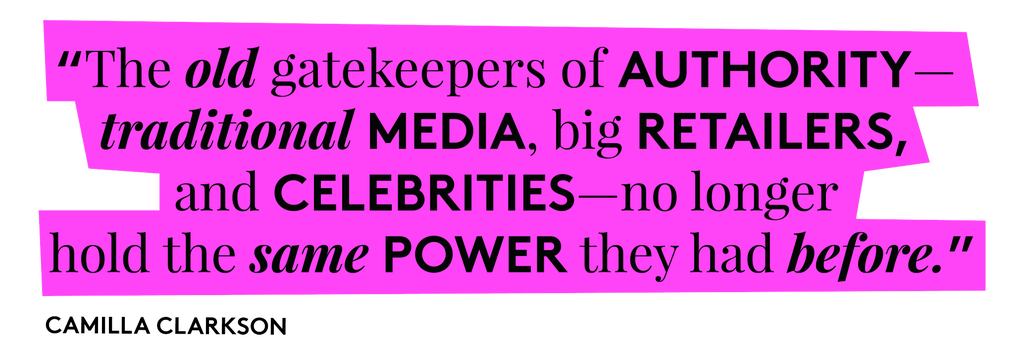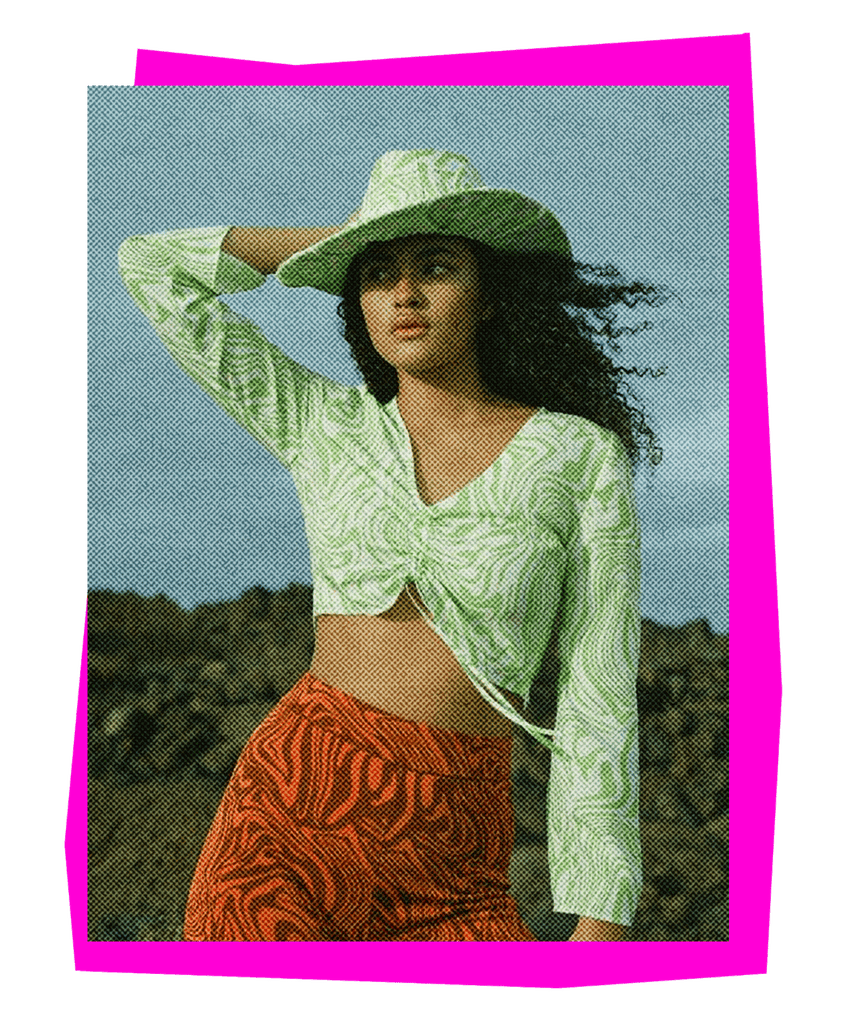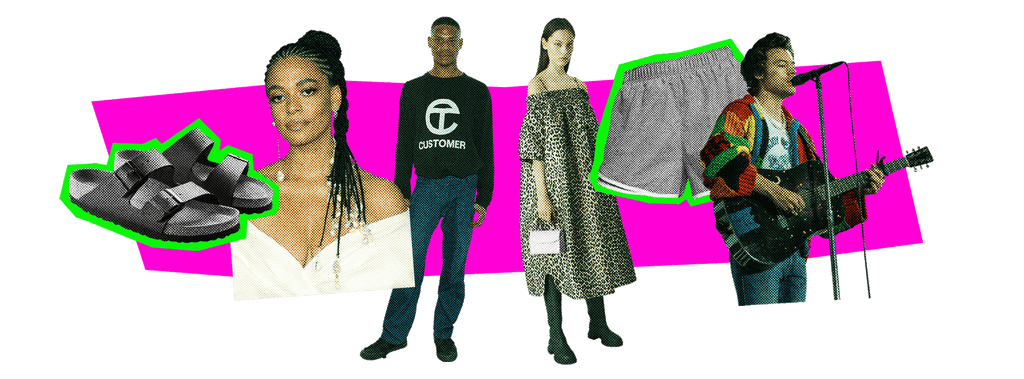Influencer Culture Is Changing. Who Will Influence Us Now?
September 01, 2020DMT Beauty#DMTBeautySpot #beauty
var waitForLoad; function setupTitle() { var grabTitle = document.getElementsByClassName("title"); grabTitle[0].innerHTML = "Influencer Culture Is Changing. Who Influences Us Now? "; } document.onmouseleave = function() { window.isReady = false } window.addEventListener("resize", function() { window.isReady = false; }); function ready(fn) { if (document.attachEvent ? document.readyState === "complete" : document.readyState !== "loading"){ fn(); } else { document.addEventListener('DOMContentLoaded', fn); } } window.isReady = window.isReady === undefined ? false : window.isReady; ready(function () { var imagesLoadedInterval = setInterval(function(){ if(window.imagesLoaded) { imagesLoaded( '#tmp-load', { background: true }, function() { window.isReady = false clearInterval(imagesLoadedInterval) }); clearInterval(imagesLoadedInterval) } }, 100) if (window.isReady === false) { window.isReady = true } else { return } waitForLoad = setTimeout(function(){ clearTimeout(waitForLoad); setupTitle(); }, 300); })

Have you, like many, hit unfollow on countless homogeneous faces on social media, their flashy displays feeling discordant alongside rolling news coverage of the pandemic’s death toll? Did you delete those apps altogether, the hyper-polished individualism they champion suddenly appearing too jarring in comparison to the human connection we all craved in lockdown? Were you disappointed — but not surprised — by brands that failed to address inequality in their supply chains, or by their hollow responses to the protests for racial justice?
In all areas of life, the pandemic has altered perspectives, shifted priorities, seen the collapse of institutions and structures built on sand, unearthed exploitation, and exacerbated pre-existing problems. Celebrities and influencers were not exempt; the rich and famous — the very same that told us a pandemic disproportionately affecting BIPOC communities, low-paid frontline workers, and the vulnerable was “the great leveler” — tried to send inspiring messages to a global audience that was grieving. Vapid sentiments — empty John Lennon lyrics, tone-deaf black-and-white filters, insensitive posts documenting luxurious lockdowns in large and remote second homes — left a distinctly sour taste in mouths. Now that so many brands and individuals have broadcast their cluelessness (and, at times, complicity) — now that influencer culture as we know it seems irrelevant and out of step with our current reality — who or what will influence us next?
Despite the pandemic leaving many wanting to retreat to a quieter way of living, and to reject the blindly-accepted structures that ruled our lives before the world was shocked into stillness, humans are inherently social beings, hard-wired to seek out community and look to leaders to inspire us. People of influence have always existed, from the socialites of the upper classes in the first half of the 1900s and the Hollywood stars and pop icons in the latter, to the celebrities born out of ‘00s tabloid culture, to the more recent internet-birthed social-media influencer. There’s no doubt a new configuration will emerge soon. Despite yearning for a back-to-basics reset, we’re all as digitally-engaged as ever: Instagram reported views on IG Live more than doubled between March and April in the UK, while TikTok gained 12 million unique users in the U.S. alone in March. To expect, post-pandemic, that we will not choose leaders to follow or that we will live in some kind of utopia free from the influence of brands is naive.
The pandemic has seen us slow down and rethink our values, though. So what does this new world look like, now that the scales have fallen from our eyes and irrevocable shifts have taken place? Who are we choosing to follow, to buy from, now that the old guard has fallen from grace and the brands and individuals unable to evolve with the socially-progressive times have been left behind?
“The meaning behind influence, and who’s driving it, is changing,” Camilla Clarkson, senior comms manager at global fashion search engine Lyst, tells Refinery29. “The old gatekeepers of authority — traditional media, big retailers, and celebrities — no longer hold the same power they had before the world stood still. We’ve prioritized the collective good over individual opinion. As a direct result, many of us are now shifting our time, attention, and financial support towards those driving real change that benefits the greater good and make us grow as individuals.”


If, before all of this, fashion traded in exclusivity and FOMO — fear of missing out on summer’s “it” dress, fear of not being on the list, fear of not knowing a designer’s name, fear of being old hat — then post-pandemic, its currency is community. Our desire for the feeling of belonging extends way beyond finding solace in Animal Crossing’s pastel-hued utopia or embracing cottagecore (its hashtag now has over half a million hits on Instagram and 3.4 billion views on TikTok.) We’re looking to brands to foster our close-knit communities now, too. Take Barcelona-based Paloma Wool, which hosted a lo-fi virtual show early on in lockdown, featuring a collective of interesting and relatable musicians, artists, and dancers from across the world who self-styled the brand’s new collection, turning their back gardens and living rooms into their very own catwalks. The brand doesn’t even call itself one, but instead a “project on clothing, photography, and other experiments.” The show looked no different from us and our friends dancing around our bedrooms before a night out, a far cry from the glitz and glamour — and cold exclusivity — of fashion month. We’re welcome in this world, so we want in.
This cross-field collaboration — of not just tapping into the field of fashion but music, art, and lifestyle, too — is a key facet of the new generation of brands leading the pack. “Social networking platforms have long turned authority on its head,” Clarkson offers. “When everyone has a voice, the traditional hierarchy of influence dissipates. It is no longer about ranking or doing one thing well — it simply isn’t sufficient to drive influence today — and instead influence is about working across disciplines, engaging with many different communities.” Denmark’s most successful export, GANNI, has done this from the start. It’s most recent turn at Copenhagen Fashion Week saw the brand shun the traditional catwalk show, and instead host a gesamtkunstwerk — a synthesis of artists using different mediums — featuring journalists, choreographers, and visual artists, rather than models.
Brands in this new generation don’t have retail spaces in every neighborhood, but they still feel local; the pervasive presence of traditional fashion houses and their flagship stores has in fact turned exclusivity into a homogeneous over-saturation, fashion critic Robin Givhan points out in this episode of High Snobiety’s On The Record. Their proximity to us instead comes from a strong and specific social media presence, one that emerged triumphant in an isolated lockdown. “Small business owners are the backbone of the economy, and they sit at the heart of our communities,” Georgia Kelly, strategic partner manager at Instagram U.K., tells me. “We’ve all been inspired by how they’ve pivoted so quickly to become digital-first, and a great example is lingerie business Nubian Skin, founded by Ade Hassan, to create diversity in skin-tone underwear. During lockdown, the brand launched an IGTV series called ‘Nubian Beings,’ featuring Ade interviewing influential BAME figures on their career highlights and giving advice for other small businesses.” We’re far more likely to invest in a brand that has an engaging, empathetic, and approachable face — as well as provides a needed service. The labels that have emerged triumphant in the pandemic are not only those we feel welcomed in by but also ones that are an important part of our community — just look at the success of Instagram’s #SupportSmallBusiness sticker.
And for consumers choosing which influencers they look to, the authenticity of those recommendations matters. “I think integrity has become really important to people,” Natalie Kingham, fashion and buying director at luxury retailer Matches Fashion, tells Refinery29. “It’s not just about what an influencer wears, but the brands they align themselves with and support. It’s more important than ever that someone believes in the product or brand they’re promoting, and so the choices influencers make have become even more scrutinized.”

People are increasingly questioning whether or not influencers’ choices are sincere — and whether or not they reflect their own ethics, as shoppers become more concerned with responsible sourcing, environmental impact, and supporting diverse business owners and entrepreneurs.
The most innovative fashion brands have socially-led values that their customer can feel proud to align with. Slow, sustainable, and ethical fashion is of course a huge priority for fashion lovers looking to feel good about their wardrobes in the face of a growing climate crisis: In an Instagram poll, 76% of our audience said it was a key consideration when buying clothes. French made-to-order label Maison Cléo encompasses many of the pillars vital for a successful contemporary brand: It’s run by a mother and daughter duo who have a convivial voice on Instagram, decry fast fashion at every turn, and celebrate the people who invest in and wear their eco-conscious pieces by sharing their posts on the brand’s feed, creating a familial relationship with their customer. Marine Serre, the London-based designer famed for her crescent moon print, may have recently been worn by the likes of Beyoncé and Adele, but searches for the brand were up 51% week-on-week before Black Is King was released. Serre uses recycled, upcycled, and deadstock materials to create her collections, and has cultivated the same kind of community spirit that people want to buy into. Post-pandemic, an influential brand’s social values are as important as its aesthetic appeal.

No one has proved this more than the creator of the “Bushwick Birkin,” Telfar Clemens. Rather than waiting for the approval of the old guard, Clemens stands alongside a wave of Black fashion leaders — including Christopher John Rogers, A-Cold-Wall’s Samuel Ross, Pyer Moss’s Kerby Jean-Raymond, Grace Wales Bonner, and Stella Jean — redefining the blueprint for success. Long before fashion houses scrambled to post meaningless black squares on Instagram following the protests sparked by the murders of George Floyd, Ahmaud Arbery, Breonna Taylor, and Tony McDade, Clemens was serving his community and supporting Black Lives Matter. In 2019, in celebration of Black Futures Month, the brand partnered with the global organization to create a T-shirt, which the designer debuted at his AW19 show. Wearing a Telfar bag — a streamlined design coming in three sizes and falling in the mid-range price category — isn’t just about owning this season’s “it” bag; it’s an anti-status status symbol, a social symbol perhaps, whereby you’re proudly flashing your inclusive and progressive political and social values rather than your wealth. The brand, whose tagline is “Not for you — for everyone,” has even created a security program, specifically to keep sales democratic and resellers from marking up the price. We’re not inspired to buy a bag for aesthetics alone anymore; when every archaic fashion rule has been thrown out the door, the only thing our wardrobe must coordinate with now is our ideals.
From unfair production lines that leave garment workers destitute, to the environmentally-irresponsible speed at which both the fast-fashion and fashion month carousels turn, to small designers being copied without credit by influential labels, and a lack of inclusivity across the board, fashion’s deepest cracks were exposed under the pandemic and BLM uprising. As the dust settles, the influential brand voices leading the way are the ones who seek to make the industry a more fair place. Aurora James, founder of accessories label Brother Vellies, established the 15 Percent Pledge to hold brands accountable and allocate “15% of their shelf space to Black-owned businesses.” An intersection of underrepresented voices is proving influential with consumers who previously felt shut out and ignored by the status quo. Labels like PRISM, Girlfriend Collective, and Universal Standard who not only have sustainability at the heart of their ethos but size inclusivity, too, are the go-to models for brands threading together an amalgam of customer needs: being eco-minded, representative of all bodies, aesthetically-pleasing, and community-driven.
There’s hope that one day every item in our wardrobe aligns with our social and political values, but for now, it’s certainly not the only factor influencing us to shop — which, despite an incoming recession and the financial insecurity the pandemic has brought us, we’re still doing: The ONS reported that online shopping reached a record high of 33.4% in May, while in June, retail sales increased by 13.9%. Beyond the slew of progressive new-gen brands, we’re still heavily influenced by the heritage and household names that cater to a new way of life where comfort, ease, and simplicity reign supreme. Take Birkenstock. The brand has been on the upswing for years since the rise of the ugly shoe aesthetic, with everyone and their mother (quite literally) owning a pair. Come lockdown, when functionality, convenience, and comfort suddenly became so vital, the brand’s shoes took on a whole new importance. Searches for the Arizona sandals spiked 225% over the first quarter of the year, according to Lyst’s Index Report. As for Nike, the heritage sportswear brand saw a 75% increase in digital sales — sure, this may have been because we were all watching The Last Dance in lockdown and searching for its Air Jordans x Dior collaboration, but I wager it was because sports shorts became the unofficial icon of working-from-home ease, while we all suddenly took up running to escape the four walls we were confined to. Athleisure, already serving multiple aspects of our lives, is going nowhere when our post-pandemic reality requires fashion brands to cater to home-centered lifestyles, not IRL events.
Interestingly, too, both brands — plus a slew of other lifestyle staples that have thrived in lockdown, like Entireworld’s soft-focus loungewear and Patagonia’s functional and sustainable offerings — fall into the genderless category, another important area consumers want to see their brands of choice catering to. What’s clear, though, is that to maintain influence, heritage and household brands must move with the times. Nike made waves with its “For once, don’t do it” campaign, riffing on its iconic slogan and pledging $40 million to social justice organizations this June, having previously championed Colin Kaepernick in the face of brand boycotts. Here, we can see survival of the fittest in real-time — only those who adapt and evolve will travel into the future of fashion.
Alongside investing in heritage labels, and championing more ethically, environmentally, and morally conscious brands that facilitate our new normal, TikTok, its influence having grown exponentially since its founding in 2018, has introduced a new element to our relationship with fashion: DIY creativity. The platform’s heady combination of memes, songs, and hashtags has not only formed a new mode of content but handed over the creative reins to the users in a totally new way. The platform specifically prioritizes discovery, allowing for a diverse, distributed, and decentralized influence by handing over the platform to smaller creators. Cottagecore wasn’t the only trend to emerge from the app this year: Lockdown’s tie-dye mania was born here, with over 4.4 million views for the hashtag surely signaling a move away from simply buying a piece because it’s trending, and instead toward adding meaning by creating it yourself. This isn’t to say brands have no place in the fashion revolution, though: JW Anderson recently saw himself at the center of a viral TikTok moment, when users, upon seeing Harry Styles don a patchwork knitted cardigan by the designer on the TODAY show from back in February, began creating their own versions. Instead of re-releasing the $1,445 cardigan, which had already sold out, Anderson published the knitting pattern and instructions, engaging in the community rather than being the gatekeeper of it. Whether it’s Styles donning a vintage-inspired JW Anderson cardigan, or Beyoncé and Adele touting a Marine Serre bodysuit, it proves that while celebrity hype will continue to influence big fashion moments, they will have meaning beyond aesthetic.
“I do believe the appetite for newness means that trends will continue to emerge,” Kingham says; when polled on Instagram Stories, 43% said they had bought something they’d seen on the app during lockdown. H&M’s fuchsia tiered dress had its 15 minutes of fame in June, Frankie Shop’s sell-out Eva T-shirt is worn by every Bottega Veneta and Old Celine fan worldwide, and you’re hard-pressed to scroll through Instagram without spotting a pair of Chanel’s sandals this summer. But those trends will no longer be solely dictated by fashion week runways or the people sitting in the front row, and they won’t be governed by how luxurious an item is or how hard it is to get your hands on it. We’re hopeful that the future of fashion is led by brands and people that stand for something, who open up our worlds and wardrobes through cross-field collaboration, who consider carefully every kind of audience when designing their clothes and curating their feeds — after all, it should be us, the consumer, that influences them to do better.
Like what you see? How about some more R29 goodness, right here?
DMTBeautySpot
via https://www.DMTBeautySpot.com
Georgia Murray, Khareem Sudlow

0 comments